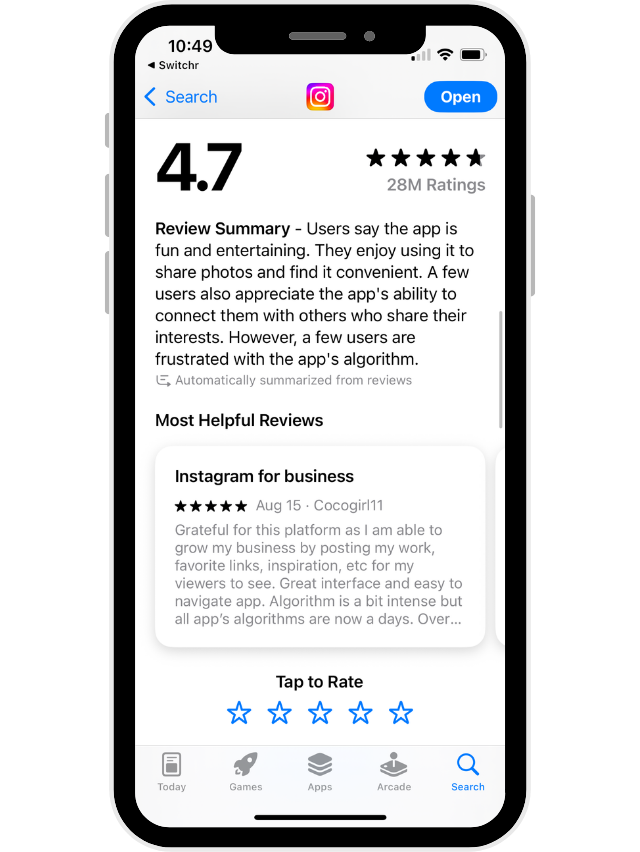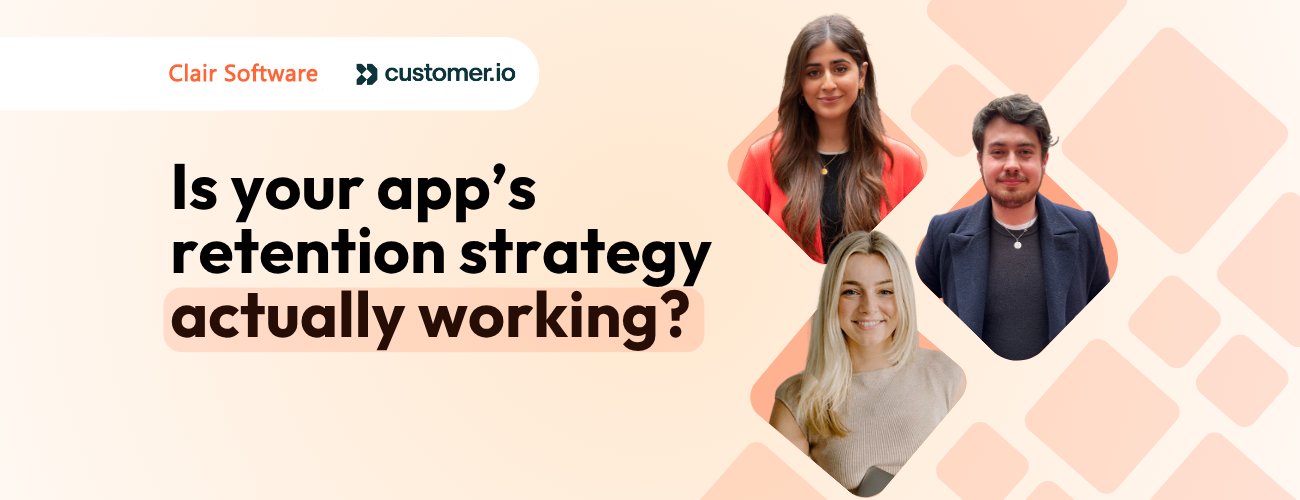AI has well and truly made its mark on app marketing, and App Store Optimisation (ASO) is no exception. From generative keyword research to natural language processing, AI is shifting how marketers approach every stage of the ASO process.
In our recent webinar, Agency Growth Director Arazoo Kadir, ASO Director Igor Blinov, and Senior ASO Manager Nat Abell shared how you can you us AI to improve your ASO strategy.
AI and the Shifting ASO Algorithm Landscape
Igor kicked off the session by addressing one of the biggest challenges ASO practitioners face: algorithm updates. “The platforms aren’t static,” he explained. “We’ve seen changes in how Apple and Google index metadata, and AI is playing a growing role in how these platforms interpret keywords and intent.”
One of the biggest shifts has been the move away from exact-match keyword strategies towards semantic search and intent analysis. In other words, app stores are getting smarter. They’re reading your app’s metadata more like a user would, understanding context and meaning, not just keywords.
And with generative AI becoming a tool within Apple and Google themselves (like Google’s auto-suggested keywords in the Play Console), it’s vital to know how to stay ahead of what the algorithms are really looking for.
Actionable Ways to Use AI in Your ASO Strategy
1. AI for Ideation but not Validation
Tools like ChatGPT and Google’s in-console suggestions are excellent for keyword brainstorming and expanding your semantic keyword set. For instance, you can use AI to:
- Explore competitor positioning
- Generate long-tail keywords
- Suggest alternative phrasing and synonyms
- Expand from core terms to wider semantic variants
However, Igor warned that while AI can help you think creatively, it shouldn’t replace proper keyword validation. “AI can be a great starting point, but it doesn’t offer the performance data you need. That’s where ASO tools come in.”
2. Understand Intent, like Google does
AI is also useful in helping you understand user search intent. Platforms like Google are already using large language models to predict what users mean when they type a query, not just what they say. For instance, someone searching “budget planner” may also be interested in “expense tracking”, a connection AI can help you uncover.
AI and Google Natural Language Processing (GNL)
One of the most game-changing areas where AI intersects with ASO is in Google’s Natural Language Processing (NLP). This is how Google analyses and interprets your app’s long description.
Why does this matter?
Google now uses NLP to assign your app a category confidence score. That score affects how your app ranks, what categories it appears in, and ultimately, how discoverable it is.
Here’s what you should do:
- Run your long description through GNL before submitting it to the Play Store.
- Aim for a confidence score of 0.8 or above in your target category.
- Once you’ve reached that, consider expanding into secondary categories by tweaking your description to fit multiple intents.
- Ensure key terms are recognised as entities, even if that means swapping out your original keywords for synonyms that the algorithm understands better.
“It’s not just about what keywords you want to rank for anymore,” Nat explained. “It’s about how the algorithm reads your text.”
Sentiment analysis and AI-Powered review summaries
AI is also transforming how user sentiment influences your ASO performance.
Both Apple and Google are rolling out AI-generated review summaries, meaning users are seeing a one-paragraph recap of all their reviews, without scrolling.
This has a huge impact on conversion. If your app has a generally negative sentiment, the AI summary will surface that immediately. Even if you have thousands of five-star reviews, one recurring negative theme could be highlighted in that summary.

So, how can you improve your review summaries?
- Use AI or GNL tools to analyse sentiment in your reviews.
- Look for recurring critical themes and feed them back to product teams.
- When crafting in-app messaging or review responses, focus on positive language. Swap phrases like “avoid harm” with “stay safe”, a small shift that can make a big difference in how the algorithm interprets sentiment.
Your AI-ASO action plan
To wrap up, Arazoo outlined a simple action plan for incorporating AI into your ASO strategy:
- Use AI for brainstorming keywords and semantic expansions
- Validate keywords with ASO tools, don’t rely solely on AI outputs
- Run your long description through GNL and aim for a 0.8+ confidence score
- Optimise for multiple categories by iterating your description with intent in mind
- Check that your key terms are being picked up as entities
- Use sentiment analysis to ensure your review summaries will reflect positively
- Test how the algorithm understands your copy, not just how it reads to users
Final thoughts
AI is no longer just a “nice to have” in your ASO toolkit, it’s a competitive necessity. But while AI tools can supercharge your ideation, they shouldn’t replace your critical thinking or testing frameworks. As Google itself warns, even its own Gemini AI “can make mistakes.”
If there’s one takeaway from the session, it’s this: optimise for the algorithm before the user ever sees your listing, and then test again once they do. If you’re interested in app marketing, be sure to follow our LinkedIn page for updates on future webinars.











